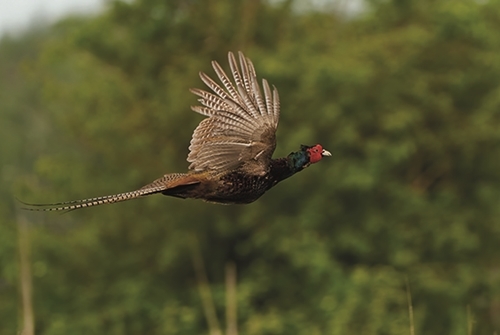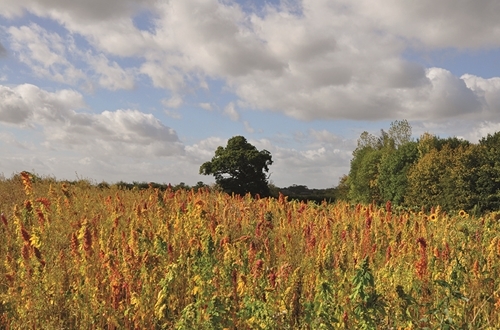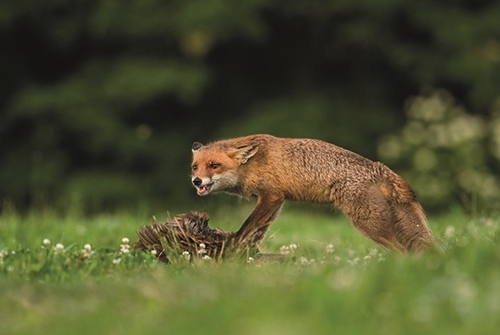
Photo Credit: Dennis Jacobsen
Rufus Sage explains the increased interest in gamebird releasing from ecologists and highlights new research.
Pheasants and red-legged partridges are species successfully introduced to the UK as wild breeding birds from Asia in around the 12th century and from southern Europe in the 18th century. Wild populations managed for the table and for shooting began to decline in the early 20th century, so releasing for shooting has steadily increased over the last few decades. Today it is undertaken in woodland and farmland to support, usually, driven game shooting throughout most of the UK.
In late summer large numbers of pheasants and/or redlegged partridges are released onto lowland game shoots. A typical professionally managed lowland driven shoot might release 1,000 pheasants in each of several woodland release pens and/or 1,000 red-legged partridges into each cover crop patch. The density of these essentially free-ranging birds in and around the sites in the weeks and months following release does not go unnoticed and there is a mixture of evidence and perception about what the effect of these birds, and the land management practices undertaken to support them, might be having on the ecology of the habitats they occupy.

Photo Credit: Peter Thomson
Several reviews that looked at the scientific evidence relating to the ecological effects of releasing were published recently (by the GWCT, RSPB and Natural England). The reviews indicate a broad range of ecological consequences that range from a group of local negative effects (usually at release sites) caused by the released birds themselves, some potentially wider-scale indirect negative effects such as increased predators, and to a variety of habitat management benefits in woodlands and on farmland. Up until now the GWCT has led this research programme and it underpins a range of GWCT best practice releasing guidelines (gwct.org.uk/releasingreport).
Increasing interest in releasing, and criticism by some commentators, has led to new licensing arrangements which have been implemented in England by Defra and which focus on designated conservation sites. Shoots near to or on those sites must fully comply with the GWCT guidelines. This will be reviewed and possibly changed in 2025. In Wales, licensing is also being discussed but there will probably be a different approach.

Photo Credit: Jakl Zdenek
Several organisations have also initiated research. This has partly been facilitated by new money from Defra, the Animal and Plant Health Agency, Natural England and Natural Resources Wales and the focus has been on issues highlighted by the reviews as requiring further research. The GWCT has some new work in several different areas. The first is to quantify the benefit of game crops to breeding hedgerow birds in a grassland landscape. The work is very relevant in the west country and Wales and we have a paper nearly ready for submission to a journal. The second is to review properly the evidence in relation to possible effects of released gamebirds on invertebrates. There were a couple of major studies undertaken as PhDs in the noughties (which showed little or no effect away from release sites) but these were never published and are widely ignored.
Our main new research programme started in early 2022 and is ongoing. The primary aim of the study is to address the suggestion that land with released gamebirds supports more foxes.
The conservation issue this potentially creates is that ground-nesting birds are more heavily predated by these extra foxes during the breeding season. This is clearly plausible but in the context of patchy predator control mainly undertaken alongside game management, the relationship between foxes and gamebirds is unlikely to be straightforward. For example we do know that while gamebird releasing has increased substantially in recent decades, data available from the GWCT and BTO suggest that the UK fox population as a whole has not responded to that. However, local or regional effects have not been explored. The first phase of fieldwork for our study will finish in late spring.